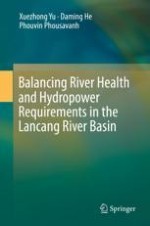2019 | OriginalPaper | Buchkapitel
3. Improving River Health Through Mitigation and Monitoring
verfasst von : Xuezhong Yu, Daming He, Phouvin Phousavanh
Erschienen in: Balancing River Health and Hydropower Requirements in the Lancang River Basin
Verlag: Springer Singapore
Aktivieren Sie unsere intelligente Suche, um passende Fachinhalte oder Patente zu finden.
Wählen Sie Textabschnitte aus um mit Künstlicher Intelligenz passenden Patente zu finden. powered by
Markieren Sie Textabschnitte, um KI-gestützt weitere passende Inhalte zu finden. powered by
